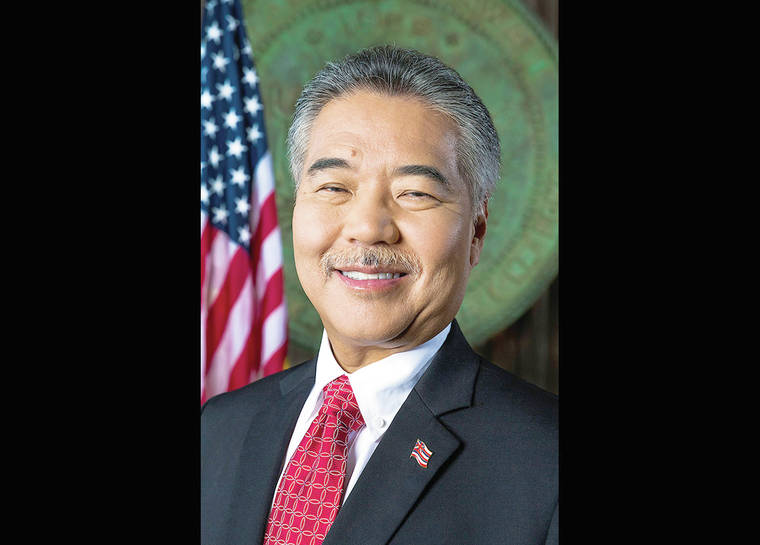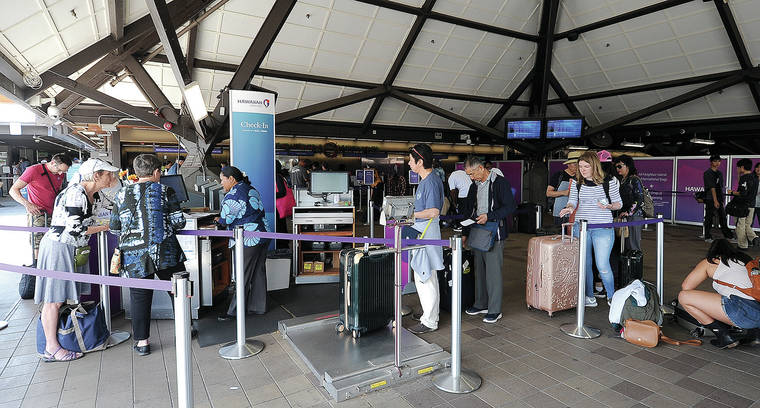Gov. David Ige said Thursday he’s considering lifting the 14-day mandatory quarantine currently in place for interisland air travelers, saying “measures are pointing in the right direction to make this move.”
Both arriving passengers into the state and those traveling interisland continue to be subject to the quarantine, which was put into place to stem the spread of coronavirus infections in Hawaii.
Despite the quarantine, 1,059 travelers arrived at Hawaii’s airports Wednesday, according to the Hawaii Tourism Authority, including 284 visitors. Seven passengers arrived on an interisland flight to Kona — five visitors and two crew members.
Ige said the state has moved from phase one of his four-phase plan to reopen Hawaii’s economy, which has plummeted precipitously as the tourism industry has been all but shuttered by the COVID-19 pandemic and the quarantine.
“We have already begun the planning process on what needs to be done to lift the quarantine,” Ige said. “And we have been in discussion with the counties and the airlines on what interisland travel will look like without a quarantine. Key issues being discussed include screening, testing, contract tracing — all of the activities we need to keep our communities safe and healthy.”
Addressing those who have called for an immediate end to the interisland travel quarantine, Ige said: “This is a major step in reopening our economy — and I want to make sure we have the systems and the resources in place before we move forward.”
Warning “no plan is perfect,” Ige said authorities expect a rise in COVID-19 cases when the quarantines are lifted.
Lt. Gov. Josh Green, a Kohala ER physician, said the state’s health care system is prepared for the uptick. He said about half the hospital beds in Hawaii are occupied, as opposed to the 80% to 85% normally, and intensive care bed units have a 39% occupancy rate, while about 40 of the 459 ventilators statewide are in use, or 9%.
“These are historic lows when you consider the state of our health care system outside of the pandemic,” he said.
Green described the current supply of personal protective equipment, or PPE, as “adequate,” but added a team he is leading is ordering PPE as needed, and is working to build an inventory in the event of a “worst case scenario” — a major outbreak in the state.
Calling interisland air travel “our highway,” Green said that component of the quarantine should be lifted soon, but said the caution in doing so is warranted. He added public health officials should continue guidance on when it’s safe to lift the quarantine, but added that there have been several recent incidents in which family members needed to fly between islands to see sick or dying relatives.
“It’s not just an economic consideration that we’re making, obviously; we’re making a human consideration,” Green said.
State Department of Transportation spokesman Tim Sakahara said interisland passengers will still be subject to temperature checks when the quarantine is lifted, and a more detailed declaration form for interisland travelers is being developed.
He said the form would “also add some health-related information,” and that both the Department of Health and the state attorney general are being consulted for input.
“If someone flies from the mainland to Honolulu, they would be required to quarantine,” Sakahara said. “However, if they had plans to fly to a neighbor island, let’s say in two days, then that person would need to be flagged and tended with, especially with law enforcement input on that issue.”
Email John Burnett at jburnett@hawaiitribune-herald.com.









